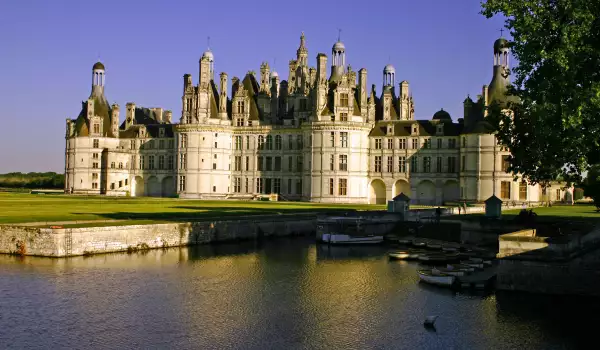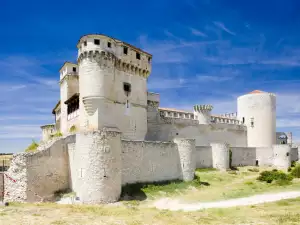Chambord Castle

Chambord Castle is one of the most beautiful palaces in the Renaissance style in the Loire valley. Construction of the castle began in 1519 during the reign of Francois I and was completed in 154. Chambord over the centuries had been used as a place where French monarchs could withdraw in retreat or during tense political times. As the most fortified strongholds Chambord castle is surrounded by a large moat, beyond which is a luscious and beautiful park.
In its composition it includes objectives of 440 rooms. This castle, which is in Nair Department Loire-et-Cher, occupies the central part of the country and is one of the most iconic and recognizable medieval buildings in France because of its incredible architecture. In the style of Chambord it kneads the traditional forms and details of French medieval fortresses with Italian classic architectural elements.

The building of the castle Chambord which remained unfinished was built by order of King Francis I from 1519 to 1547 as he wanted to build a palace with the idea to be closer to his mistress, who lived in part of the celebrated France and was of noble family. The interior of the Master Chambord has the imprint left of Leonardo da Vinci, who visited the palace, while it was still being built and he also developed one of the engravings on it.
Besides these 440 rooms in the castle Chambord you can see the whole 365 fireplaces and 13 great staircases that are made between different levels. The tour of adjacent parks is about 22 miles, but there are there the built stables, which once housed 1200 target stallions and mares. For all time of existence of Chambord until today 1800 men labored workers, architects and other craftsmen have worked on it.
The world famous Leonardo da Vinci had the idea and the task to build a magnificent staircase of Chambord, which consists of four superimposed levels. His project remains on paper only because the workers who built up the staircase wanted to simplify it.

Since 1947 the French state began full restoration and renovation of Chambord that had took over 30 years to complete.















